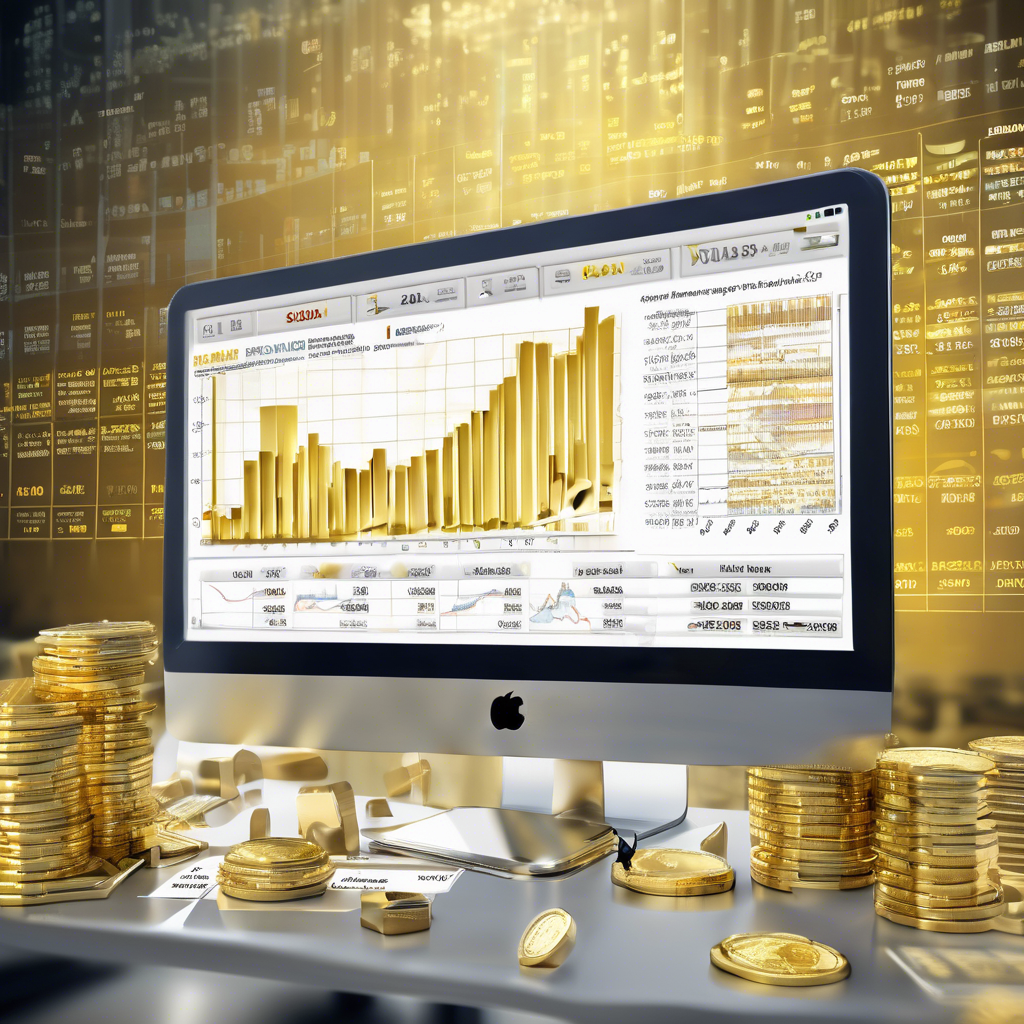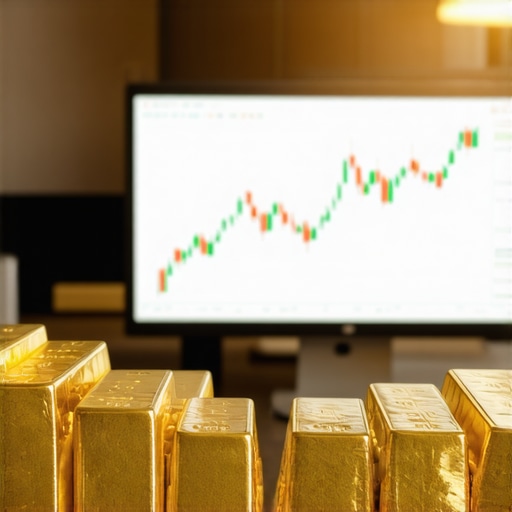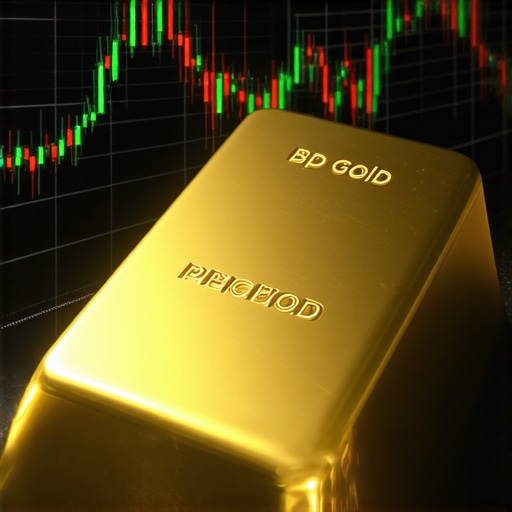Understanding Gold Price Forecasting and Its Importance
Gold price forecasting is a critical aspect for investors looking to navigate the complexities of the gold market. As a precious metal, gold serves various purposes, from being a safe haven during economic uncertainty to a key component in investment portfolios. With its value constantly fluctuating, understanding the underlying factors that influence gold prices can empower investors to make informed decisions. This article delves into essential strategies for accurately forecasting gold prices, ensuring that you stay ahead in this dynamic market.
The Role of Economic Indicators in Gold Price Forecasting
Economic indicators play a significant role in determining gold prices. Key metrics such as inflation rates, interest rates, and employment data provide insight into the overall economic landscape. For instance, when inflation rises, investors often flock to gold as a hedge against the decreasing purchasing power of currency. Conversely, higher interest rates typically lead to a stronger dollar, which can decrease gold’s appeal as a non-yielding asset. Monitoring these indicators is crucial for developing an effective gold price forecast.
Analyzing Supply and Demand Dynamics
Another critical strategy in gold price forecasting involves analyzing the supply and demand dynamics of the market. The demand for gold can stem from various sources, including jewelry, technology, and investment. Moreover, central banks play a pivotal role by adjusting their gold reserves based on their economic strategies. For example, during times of financial instability, central banks may increase their gold holdings, driving up demand and consequently affecting prices. Staying updated on these trends can enhance your ability to predict price movements.
Utilizing Technical Analysis for Price Predictions
Technical analysis is a widely used method among traders and investors for forecasting gold prices. By examining historical price movements and chart patterns, investors can identify potential future trends. Key indicators such as moving averages, Relative Strength Index (RSI), and support and resistance levels are integral to this analytical approach. Familiarizing yourself with these tools can greatly improve your forecasting accuracy. For a deeper dive into gold trading techniques and strategies, check out our post on essential gold trading techniques.
The Importance of Global Events and Geopolitical Factors
Global events, including geopolitical tensions, natural disasters, and major political changes, can significantly impact gold prices. For instance, during times of crisis or uncertainty, gold often experiences a surge in demand as investors seek safe-haven assets. Understanding the correlation between global events and market reactions allows you to anticipate price fluctuations. Keeping a pulse on current news and developments is vital for making informed predictions.
Combining Strategies for Comprehensive Forecasting
While each strategy outlined above can provide valuable insights, combining them often yields the best results. By integrating economic indicators, supply and demand analysis, technical analysis, and awareness of global events, investors can develop a more comprehensive and nuanced approach to forecasting gold prices. This multifaceted strategy can enhance your overall investment performance and help you navigate the gold market more effectively.
Understanding Gold Price Forecasting and Its Importance
Gold price forecasting is a critical aspect for investors looking to navigate the complexities of the gold market. As a precious metal, gold serves various purposes, from being a safe haven during economic uncertainty to a key component in investment portfolios. With its value constantly fluctuating, understanding the underlying factors that influence gold prices can empower investors to make informed decisions. This article delves into essential strategies for accurately forecasting gold prices, ensuring that you stay ahead in this dynamic market.
The Role of Economic Indicators in Gold Price Forecasting
Economic indicators play a significant role in determining gold prices. Key metrics such as inflation rates, interest rates, and employment data provide insight into the overall economic landscape. For instance, when inflation rises, investors often flock to gold as a hedge against the decreasing purchasing power of currency. Conversely, higher interest rates typically lead to a stronger dollar, which can decrease gold’s appeal as a non-yielding asset. Monitoring these indicators is crucial for developing an effective gold price forecast.
Analyzing Supply and Demand Dynamics
Another critical strategy in gold price forecasting involves analyzing the supply and demand dynamics of the market. The demand for gold can stem from various sources, including jewelry, technology, and investment. Moreover, central banks play a pivotal role by adjusting their gold reserves based on their economic strategies. For example, during times of financial instability, central banks may increase their gold holdings, driving up demand and consequently affecting prices. Staying updated on these trends can enhance your ability to predict price movements.
Utilizing Technical Analysis for Price Predictions
Technical analysis is a widely used method among traders and investors for forecasting gold prices. By examining historical price movements and chart patterns, investors can identify potential future trends. Key indicators such as moving averages, Relative Strength Index (RSI), and support and resistance levels are integral to this analytical approach. Familiarizing yourself with these tools can greatly improve your forecasting accuracy. For a deeper dive into gold trading techniques and strategies, check out our post on essential gold trading techniques.
The Importance of Global Events and Geopolitical Factors
Global events, including geopolitical tensions, natural disasters, and major political changes, can significantly impact gold prices. For instance, during times of crisis or uncertainty, gold often experiences a surge in demand as investors seek safe-haven assets. Understanding the correlation between global events and market reactions allows you to anticipate price fluctuations. Keeping a pulse on current news and developments is vital for making informed predictions.
Combining Strategies for Comprehensive Forecasting
While each strategy outlined above can provide valuable insights, combining them often yields the best results. By integrating economic indicators, supply and demand analysis, technical analysis, and awareness of global events, investors can develop a more comprehensive and nuanced approach to forecasting gold prices. This multifaceted strategy can enhance your overall investment performance and help you navigate the gold market more effectively.
Exploring the Impact of Market Sentiment on Gold Prices
Market sentiment is another essential factor that can influence gold prices significantly. The collective attitude of investors towards the market can lead to price volatility, making it crucial to gauge sentiment for effective forecasting. Tools such as the Fear and Greed Index can help investors assess market moods and adjust their strategies accordingly. Understanding how sentiment affects gold prices can refine your investment approach and provide a competitive edge.
Utilizing Sentiment Indicators for Better Forecasting
Several sentiment indicators can provide insights into market behavior. For example, the COT (Commitments of Traders) report offers a snapshot of trader positioning in the futures market, which can indicate whether the market is bullish or bearish on gold. Additionally, social media analysis can reveal prevailing opinions and trends among retail investors. By integrating sentiment analysis into your forecasting methods, you can enhance your understanding of market reactions and make more informed predictions.
Keeping an Eye on Gold Correlations with Other Assets
Gold does not exist in isolation; its price movements are often correlated with other financial assets. Analyzing how gold prices interact with currencies, particularly the US dollar, as well as commodities like oil, can provide valuable insights. For instance, a strong dollar often leads to lower gold prices, as it makes gold more expensive for international buyers. Understanding these correlations can help refine your forecasting techniques and improve your investment strategy.
Leveraging Historical Trends for Future Predictions
Finally, examining historical price trends can provide context for future forecasting. By identifying recurring patterns and behaviors during similar market conditions, investors can gain insights into potential future price movements. For instance, studying price reactions during previous economic crises can highlight how gold has historically performed, allowing for better predictions in similar future scenarios. To understand how to navigate these trends effectively, explore our post on current trends and predictions in the gold market.
Exploring the Impact of Market Sentiment on Gold Prices
Market sentiment is another essential factor that can influence gold prices significantly. The collective attitude of investors towards the market can lead to price volatility, making it crucial to gauge sentiment for effective forecasting. Tools such as the Fear and Greed Index can help investors assess market moods and adjust their strategies accordingly. Understanding how sentiment affects gold prices can refine your investment approach and provide a competitive edge.
Utilizing Sentiment Indicators for Better Forecasting
Several sentiment indicators can provide insights into market behavior. For example, the COT (Commitments of Traders) report offers a snapshot of trader positioning in the futures market, which can indicate whether the market is bullish or bearish on gold. Additionally, social media analysis can reveal prevailing opinions and trends among retail investors. By integrating sentiment analysis into your forecasting methods, you can enhance your understanding of market reactions and make more informed predictions.
Keeping an Eye on Gold Correlations with Other Assets
Gold does not exist in isolation; its price movements are often correlated with other financial assets. Analyzing how gold prices interact with currencies, particularly the US dollar, as well as commodities like oil, can provide valuable insights. For instance, a strong dollar often leads to lower gold prices, as it makes gold more expensive for international buyers. Understanding these correlations can help refine your forecasting techniques and improve your investment strategy.
Leveraging Historical Trends for Future Predictions
Finally, examining historical price trends can provide context for future forecasting. By identifying recurring patterns and behaviors during similar market conditions, investors can gain insights into potential future price movements. For instance, studying price reactions during previous economic crises can highlight how gold has historically performed, allowing for better predictions in similar future scenarios. To understand how to navigate these trends effectively, explore our post on current trends and predictions in the gold market.
Incorporating Seasonal Trends in Gold Price Analysis
Seasonality can play a significant role in gold price movements, with certain times of the year historically showing consistent price trends. For example, demand for gold often increases during the wedding season in India, which can drive prices higher. Additionally, the end of the year can see increased buying as investors look to secure their assets before year-end reports. Keeping these seasonal trends in mind is essential for accurate forecasting and can complement your overall strategy.
The Influence of Technological Advances on Gold Trading
The emergence of technology has transformed gold trading, impacting price forecasting as well. With the rise of online trading platforms and automated trading systems, investors can execute trades swiftly and efficiently. Moreover, blockchain technology is gaining traction in the gold industry, providing transparency and security in transactions. Staying informed about these technological advancements can offer insights into market dynamics and improve your investment strategies.
Considering Global Economic Policies and Their Effects
Global economic policies, including monetary policy decisions by central banks, can have profound effects on gold prices. For instance, when central banks implement quantitative easing, it can lead to increased money supply and inflation fears, prompting investors to seek gold as a hedge. Understanding the implications of these policies and their potential impact on gold prices can further enhance your forecasting accuracy. Explore the effects of central bank gold purchases to deepen your insights.
Incorporating Seasonal Trends in Gold Price Analysis
Seasonality can play a significant role in gold price movements, with certain times of the year historically showing consistent price trends. For example, demand for gold often increases during the wedding season in India, which can drive prices higher. Additionally, the end of the year can see increased buying as investors look to secure their assets before year-end reports. Keeping these seasonal trends in mind is essential for accurate forecasting and can complement your overall strategy.
The Influence of Technological Advances on Gold Trading
The emergence of technology has transformed gold trading, impacting price forecasting as well. With the rise of online trading platforms and automated trading systems, investors can execute trades swiftly and efficiently. Moreover, blockchain technology is gaining traction in the gold industry, providing transparency and security in transactions. Staying informed about these technological advancements can offer insights into market dynamics and improve your investment strategies.
Considering Global Economic Policies and Their Effects
Global economic policies, including monetary policy decisions by central banks, can have profound effects on gold prices. For instance, when central banks implement quantitative easing, it can lead to increased money supply and inflation fears, prompting investors to seek gold as a hedge. Understanding the implications of these policies and their potential impact on gold prices can further enhance your forecasting accuracy. Explore the effects of central bank gold purchases to deepen your insights.
Evaluating Broader Market Trends and Their Implications
It’s essential to evaluate broader market trends that can influence gold prices. Factors such as stock market performance, real estate trends, and commodity prices play a crucial role in shaping investor sentiment towards gold. For instance, a declining stock market often leads investors to shift their focus toward gold as a safer asset. By keeping an eye on these overarching trends, you can better position yourself in the gold market.
Understanding the Role of Gold in Diversification Strategies
Gold is not only a valuable asset but also an integral part of diversification strategies. By including gold in your investment portfolio, you can mitigate risk and enhance overall returns. The metal’s historical performance as a hedge against inflation and currency fluctuations makes it an attractive option for long-term investors. If you’re looking for ways to diversify your portfolio effectively, consider exploring gold investment strategies that align with your financial goals.
Comprehensive FAQ Section on Gold Price Forecasting
What are the primary factors affecting gold prices?
Gold prices are influenced by several factors, including economic indicators like inflation and interest rates, supply and demand dynamics, geopolitical events, market sentiment, and correlations with other assets such as currencies and commodities.
How can I use economic indicators to forecast gold prices?
Economic indicators provide insights into the overall economic health, which can impact gold prices. Monitoring inflation rates, interest rates, and employment statistics can help you predict trends in gold prices, as investors often turn to gold during economic uncertainty.
What role does market sentiment play in gold price forecasting?
Market sentiment reflects the overall attitude of investors toward gold. Tools like the Fear and Greed Index and the Commitments of Traders report can help gauge market sentiment, allowing you to adjust your investment strategies accordingly.
How does globalization impact gold prices?
Globalization affects gold prices through increased demand from emerging markets, changes in trade policies, and international economic conditions. Events such as trade wars or global economic slowdowns can drive investors to seek gold as a safe-haven asset.
Can historical price trends help in predicting future gold prices?
Yes, analyzing historical price trends can provide context for future predictions. By identifying patterns during similar economic conditions, investors can make more informed forecasts about potential price movements.
What is the significance of technical analysis in gold trading?
Technical analysis involves examining historical price movements and chart patterns to identify probable future trends. Utilizing indicators like moving averages and RSI can enhance your ability to forecast gold prices effectively.
How often should I reassess my gold price forecasts?
Reassessing your forecasts regularly is crucial, especially in response to new economic data, changes in market sentiment, or significant global events that could influence gold prices. Staying informed and adaptable can improve your forecasting accuracy.
What are the best resources for learning more about gold price forecasting?
Some trusted resources for learning about gold price forecasting include financial news websites like Bloomberg and CNBC, investment research platforms like Morningstar, and reputable financial literature focusing on commodities and gold trading strategies.
How do seasonal trends affect gold prices?
Seasonal trends can significantly influence gold prices, especially during specific times of the year when demand spikes, such as wedding seasons in India or year-end buying by investors looking to secure their assets.
Authority Resources for Gold Price Forecasting
For further insights into gold price forecasting, consider exploring the following trusted resources:
- Bloomberg – Gold Market Overview
- CNBC – Gold News
- Kitco – Gold Prices & News
- World Gold Council – Gold Market Research
- Investing.com – Gold Commodities
Conclusion
In conclusion, accurate gold price forecasting is a multifaceted endeavor that requires an understanding of various economic indicators, market sentiment, and global events. By integrating these elements into a cohesive strategy, investors can enhance their ability to predict gold price movements effectively. As you navigate the complexities of the gold market, remember that staying informed and adaptable is key to making sound investment decisions. Embrace the insights provided in this guide to bolster your forecasting skills and secure your place in the dynamic world of gold investing.











This post offers a comprehensive overview of factors that influence gold price forecasting, which I find particularly useful for long-term investment planning. As someone who’s been tracking the gold market for a few years, I agree that combining multiple strategies like economic indicators, technical analysis, and global events tends to give a clearer picture. I’ve often observed that during times of geopolitical tension, market sentiment shifts rapidly, and gold prices can become quite volatile. Staying ahead requires not only monitoring these aspects but also understanding seasonal trends, such as increased demand during the Indian wedding season or year-end. Personally, I’ve found that integrating sentiment indicators like the COT report adds an extra layer of insight. Have others noticed particular indicators that tend to predict short-term price movements more accurately? It seems that a balanced approach, staying updated with authority resources, and being adaptable are key to successful forecasting.